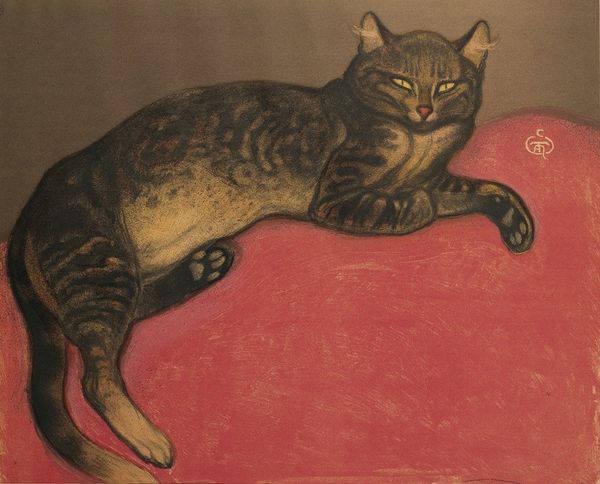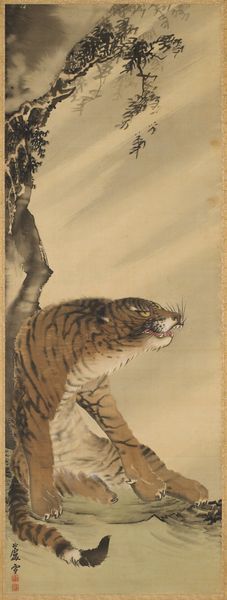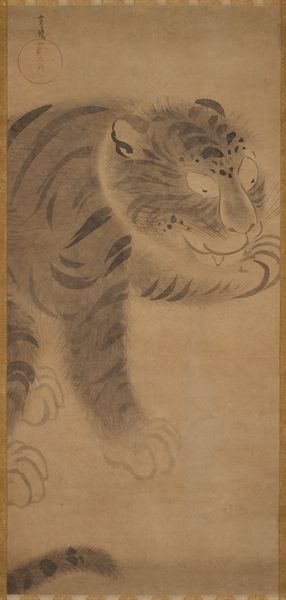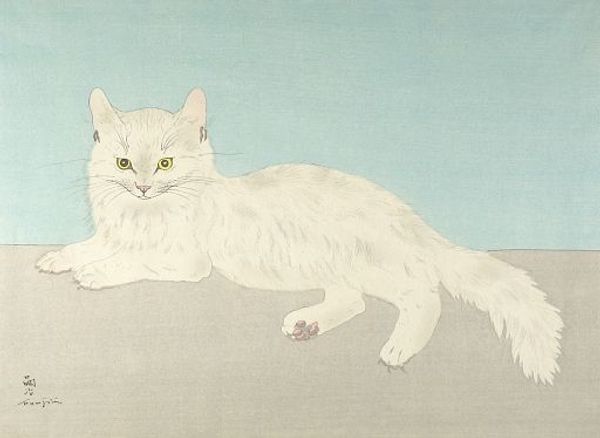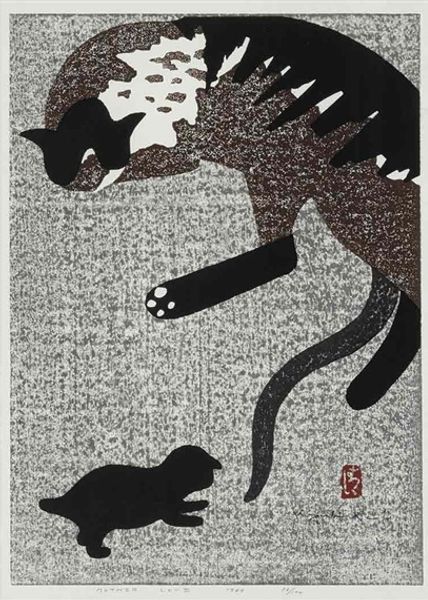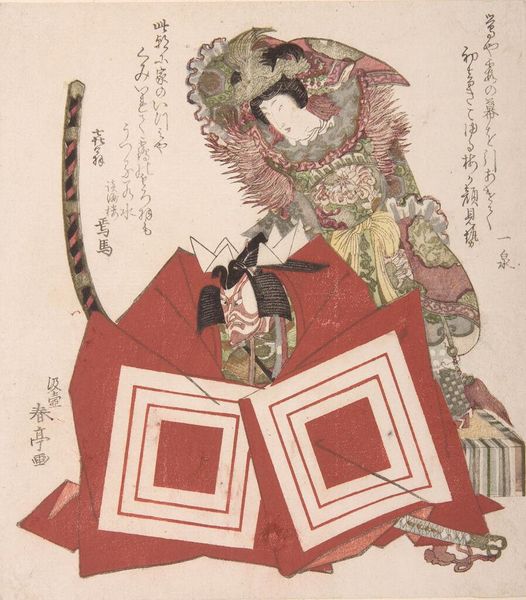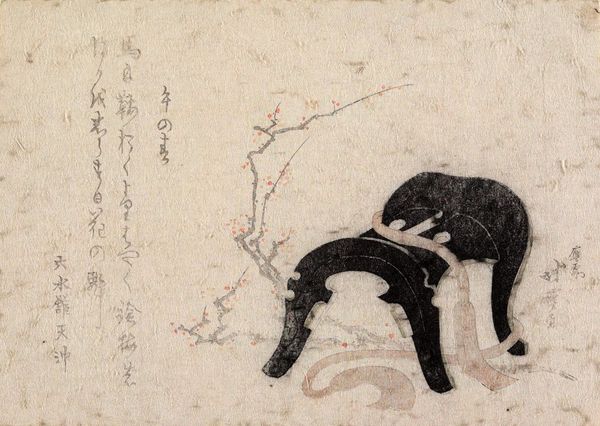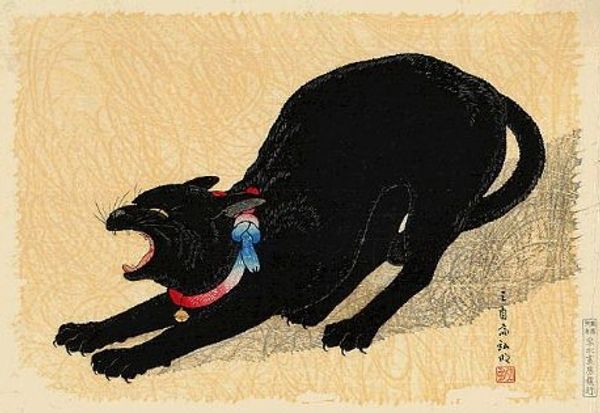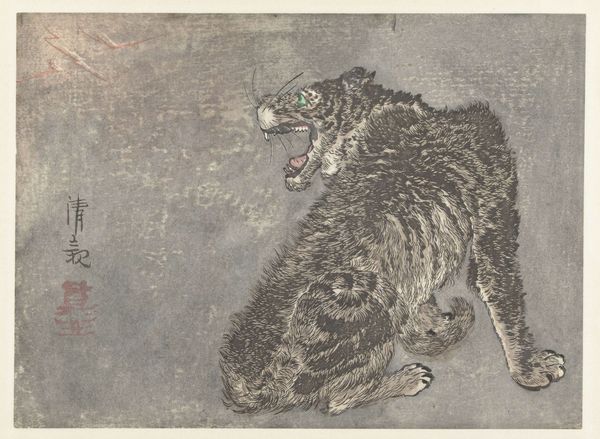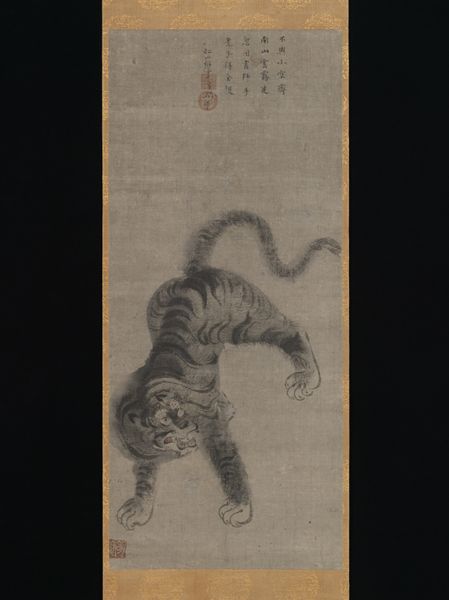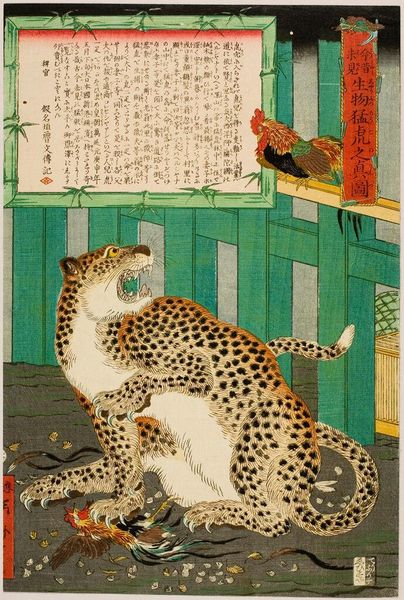
Copyright: A.C.Fine Art Inc.
Curator: Alex Colville's "Cat on Fence", an oil painting from 1956. It has a sort of muted palette; a prowling cat depicted in remarkable detail atop a stark, geometrically patterned fence. Editor: My initial reaction is one of cool detachment, almost eerie calm. The fence seems more like a stage. Is the cat a performer or a prisoner? The geometric pattern of the fence creates a repetitive backdrop which almost transforms the cat in a figure in a play. Curator: The apparent simplicity of the scene is quite deliberate. Colville’s realist style, though here simplified and geometricized, asks us to think about the social roles assigned to animals in postwar suburban life. Is the domestic cat a representation of safety, control, confinement? Is that why it’s elevated atop that fence? Editor: And how does the social structure you described impact the imagery used? Was there a political agenda driving Colville's work beyond his intention to just reflect domesticity? Does the image somehow mirror women on a pedestal? Curator: Colville's focus, at the time, was on using symbolism of animals to reflect domestic environments after the war, exploring feelings such as hope, despair, tension within seemingly ordinary places. In the Fifties, especially in North America, suburbanization became widespread and consumerism began expanding alongside, perhaps encouraging discussions around traditional gender roles that you mention. Editor: Yes, the stylized form and flatness bring this forward more than perhaps other kinds of representation would. There's a stillness which emphasizes reflection beyond simple observation. How might gender and the concept of "performance" intersect with ideas around domesticity? Does this calm aesthetic suggest a sense of repression or imposed order within the social spaces of its time? Curator: Looking at how that structured surface confines the animal figure opens to a wide range of possibilities, doesn't it? We could also see its prowling as something defiant against the grid, though. That single fly adds another perspective, it becomes an additional animal presence but unlike the cat, is unrestricted. Editor: A valuable reading indeed! By re-contextualizing its creation through societal frameworks, the fence motif suddenly introduces ideas about marginalization which I did not get at first glance. Curator: Precisely! By understanding the political dynamics that shaped both art and social identities during its making, "Cat on Fence" reveals more than just feline form on painted canvas; instead acting as a gateway through social commentary.
Comments
No comments
Be the first to comment and join the conversation on the ultimate creative platform.
